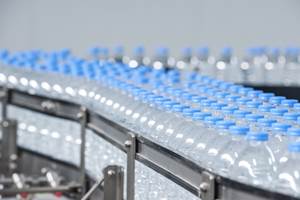Intelligent Monitoring with MTConnect
A major challenge to the wide adoption of the MTConnect standard on the shop floor is a lack of understanding about what is required to implement the standard. The most common issues are a mismatch between the adapter and the machine, a missing agent, a wrong error log setting, firewall interference, duplicate port configuration, inconsistent file names and incorrect adapter IP addresses.
In the past, responding to alerts, watching dashboards and manually analyzing data sets were the standard way to monitor machines in the manufacturing industry. But today’s hyper-dynamic, highly distributed application environments have become too complicated to keep pace with the increasing amounts of vital data. The sheer volume of information is simply more than shops can manage using traditional tools. Manufacturers who want to stay competitive need not only to embrace digital connectivity, but also the Industrial Internet of Things (IIoT) to truly understand their data and use it effectively.
A standard digital connectivity platform that some of the world’s leading manufacturers use is MTConnect, which enables users to collect data in structured XML rather than in proprietary formats to open up a world of new industry applications. Analysis that used to take experts hours or days to harvest can now be realized in seconds. While MTConnect can significantly help boost manufacturing efficiency and productivity, issues can arise (as is the case with any computer-based system). Fortunately, these issues are generally easy to recognize and resolve.
Here are seven of the most common issues with implementing the MTConnect standard:
- Mismatch between the adapter and the machine. Each machine requires a specific adapter. Even different models of the same machine require specific adapters that may be different from one another, so be sure to provide the machine tool’s original equipment manufacturer with your machine model and software version when acquiring an adapter to ensure you receive the correct one.
- A missing agent. If a machine does not have an agent, a manufacturer will need to run a PC-to-host stand-alone agent on the network to communicate with the control via a transmission control protocol (TCP).
- Wrong error log setting. When installing MTConnect agent or adapter software, it is important to set the error-logging level in the configuration file to “information only” or “fatal” rather than “debug.” The debug setting is used to test the agent and adapter and continually provides comprehensive operating information during installation.
- Firewall interference. The firewall feature of Windows may disrupt communication between the machine and software. Manufacturers can resolve this issue by configuring specific firewall exceptions for the 7878 and 5000 ports used in MTConnect.
- Duplicate port configuration. By default, MTConnect software communicates with the agent through Port 5000. However, when multiple stand-alone agents are located on a server, every agent has to be configured with a unique port number so that the software will correctly gather data from each agent and machine.
- Inconsistent file names. The names of device files must match those in the configuration file.
- Incorrect adapter IP addresses. Incorrect or out-of-order numbers in the IP address that a manufacturer’s application uses to communicate with the adapter will produce errors. If the address is correct but is for the wrong adapter, machine data will be transmitted for a machine, but not for the one that the manufacturer intended.
About the Contributor
Neil Desrosiers
Neil Desrosiers is an application engineer, developer and MTConnect specialist for Mazak.
Related Content
What is Scientific Maintenance? Part 2
Part two of this three-part series explains specific data that toolrooms must collect, analyze and use to truly advance to a scientific maintenance culture where you can measure real data and drive decisions.
Read MoreWhat is Driving Mold Lifecycle Management Digitalization?
OEMs are looking to partner with suppliers to share and track data across the supply chain for advanced intervention and process management.
Read MoreTen Things Mold Builders Should NOT Do
What you don’t do can be just as important as what you do, sometimes even more so. One thing great mold builders do is take note of what gets in the way of their success and stop doing it.
Read MoreProducts and Services for Multiple Moldmaking Needs
New year, new technology roundup! Featured here is a collection of product offerings, from profile milling cutters to industry-specific CAD/CAM software to innovative hot work tool steels.
Read MoreRead Next
Reasons to Use Fiber Lasers for Mold Cleaning
Fiber lasers offer a simplicity, speed, control and portability, minimizing mold cleaning risks.
Read MoreAre You a Moldmaker Considering 3D Printing? Consider the 3D Printing Workshop at NPE2024
Presentations will cover 3D printing for mold tooling, material innovation, product development, bridge production and full-scale, high-volume additive manufacturing.
Read MoreHow to Use Continuing Education to Remain Competitive in Moldmaking
Continued training helps moldmakers make tooling decisions and properly use the latest cutting tool to efficiently machine high-quality molds.
Read More



.jpg;maxWidth=300;quality=90)


















